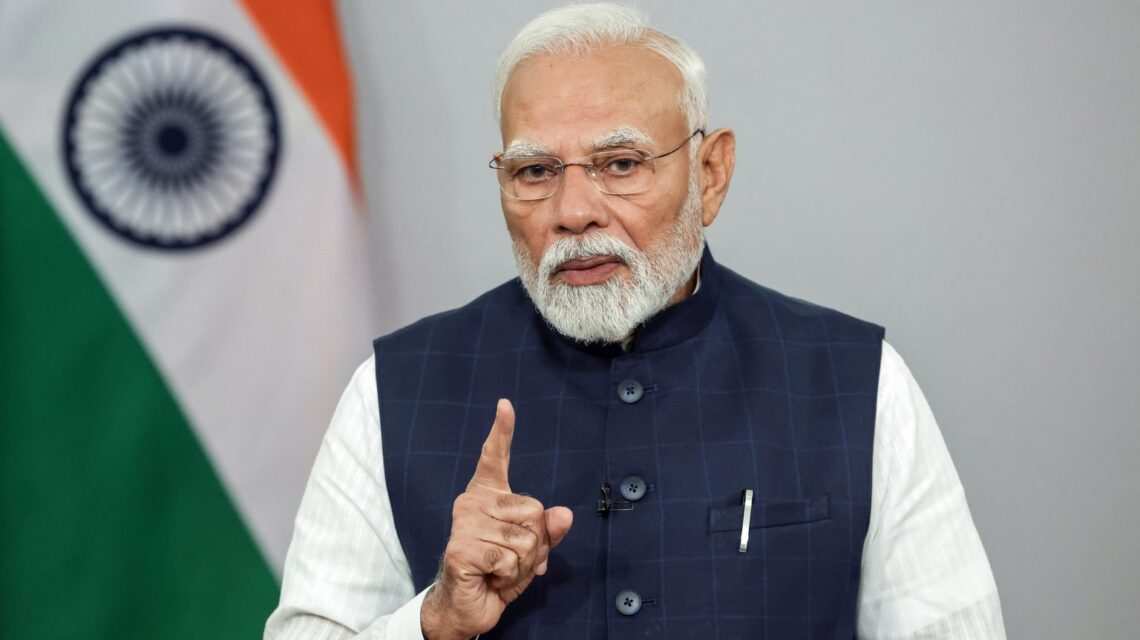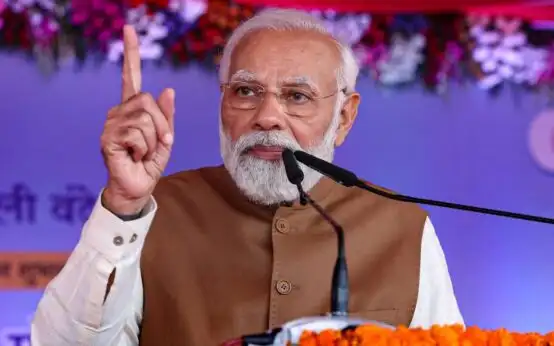What Action Will India Take Against Pakistan? Here Are 6 Options
Pakistan on Wednesday claimed it had received “credible intelligence” that India might carry out military action against it within two days.

Information Minister Ataullah Tarar announced on television that such an attack could happen within 24 to 36 hours. His statement came a day after Indian Prime Minister Narendra Modi gave the Indian military “full freedom” to respond to the Pahalgam attack.
Modi held a series of security meetings on Tuesday and Wednesday following the April 22 attack in Kashmir that killed 26 people. As tensions rise, both countries have reduced diplomatic engagements, suspended bilateral agreements, and expelled each other’s citizens.
What kind of military action could India take against Pakistan?
It is unclear what action India might take, but in the past, it has employed various military tactics against Pakistan. These include:
1. Covert Military Operations
These operations are not publicly announced, and confirmation is rarely available. India and Pakistan have reportedly carried out several such secret missions in past decades, targeting enemy forces.
These operations are often retaliatory and serve to send a message without forcing the adversary to respond, thus reducing the risk of escalation. However, if such incidents become public, governments face pressure to respond.
2. Surgical Strikes with Publicity
Sometimes, rather than sending a subtle message, India may seek to publicly humiliate its adversary. In such cases, attacks are announced openly.
For instance, after a 2016 terror attack in Uri killed 17 Indian soldiers, India claimed to have crossed the border and struck Pakistani “launch pads.” Lieutenant General Ranbir Singh said the strike aimed to prevent terrorists from infiltrating India again. India claimed dozens of militants were killed in that operation.
3. Air Strikes
In February 2019, a suicide bombing in Pulwama killed 40 Indian troops. The Pakistan-based group Jaish-e-Mohammed claimed responsibility.

Ahead of national elections, the Indian Air Force launched an air strike in Pakistan-controlled Kashmir, claiming to target and kill dozens of militants. Pakistan, however, said the bombs fell in a forest and no fighters were killed. The next day, Indian and Pakistani fighter jets clashed in the skies, and Pakistan downed an Indian jet, capturing the pilot, who was released a few days later.
4. Capturing Pakistan-Controlled Territory
There has been increasing demand in India to capture the Pakistan-controlled part of Kashmir, especially after the Pahalgam attack. Although seizing land from a nuclear-armed country with strong military power seems unlikely, history shows India has done it before. In 1984, under Operation Meghdoot, India captured the Siachen Glacier from Pakistan.
5. Naval Operations
After the Pahalgam attack, the Indian Navy announced a missile test and said it had conducted ship-based attack drills on April 27. “The Indian Navy is ready to defend the nation’s maritime interests at any time and place,” it said. Many military analysts viewed this as a show of strength directed at Pakistan.
6. Full-Scale War
India and Pakistan have fought four wars since their independence 78 years ago—three over Kashmir. The first war occurred in 1947 when Pakistani militias invaded Kashmir, prompting its king, Hari Singh, to seek help from India. India agreed on the condition that Kashmir accede to it, which the king accepted. The war ended on January 1, 1949, and the region has remained divided ever since.
In 1965, another conflict broke out when Pakistan crossed the ceasefire line. India responded by attacking toward Lahore. Thousands died before the United Nations brokered peace.
In 1971, the countries fought over East Pakistan, with India supporting Bangladesh’s independence. The Simla Agreement in 1972 established the Line of Control.
In 1999, Pakistan’s military crossed the LoC, triggering the Kargil War. After intense fighting in the Himalayas, India pushed Pakistani forces back across the border.


 Modi’s “Sleepless Nights” Comment at Vizhinjam Port
Modi’s “Sleepless Nights” Comment at Vizhinjam Port  Apple Shifts Device Production to India and Vietnam
Apple Shifts Device Production to India and Vietnam  Tesla Denies Rumors of Elon Musk’s Firing as CEO
Tesla Denies Rumors of Elon Musk’s Firing as CEO  Finland’s Tap Water Outshines Bottreferencesed Brands
Finland’s Tap Water Outshines Bottreferencesed Brands  US-Ukraine Reconstruction Deal Trump Secures Economic Gains
US-Ukraine Reconstruction Deal Trump Secures Economic Gains  Why Barcelona vs. Inter Was a Classic
Why Barcelona vs. Inter Was a Classic